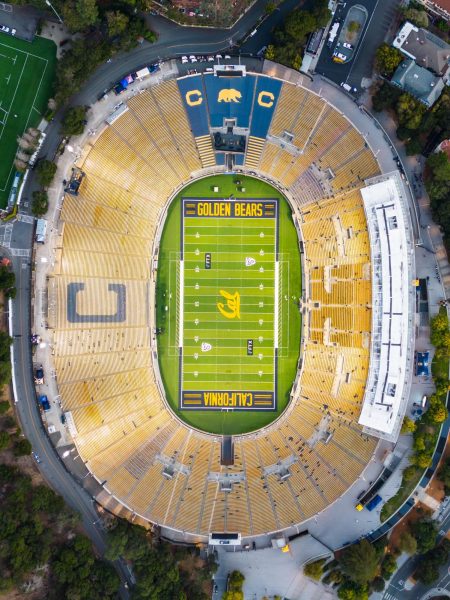An era of excellence will likely be ending next year. The Pac-12 seems to be ending after a 65-year run on top of college sports. The conference became known as the “Conference of Champions” because it is the only conference that has won 500 NCAA Titles, including 222 since 1999-2000 according to the conference’s own records. In big sports like football and basketball, the conference struggled to keep up with other Power 5 conferences, but it dominated other smaller followed sports like softball, golf, swimming and diving, and tennis. The 6 largest schools in the conference left for other Power 5 conferences, leaving the mid-major schools to scramble to find a new home. This mass exodus in just a few weeks led to one of the largest conferences in sports facing a very uncertain future. In what will likely be the last year of Pac-12 play, we look at how conference realignment can disrupt college sports and have many bad consequences.
College athletics has been nearly the same for decades. Yes, teams do move, and conferences have changed names, but when people think of the Power 5, they think of the ACC, SEC, BIG 10, BIG 12, and PAC 12. The landscape has changed where money has become the biggest motivator. TV contracts signed by the Big Ten and SEC have changed college athletics by enticing big-name schools to join their conferences for more money. Massive athletic powerhouse schools like USC, UCLA, Washington, Oregon, Texas, and Oklahoma have bolted in hopes of greener pastures. To keep a balance within their conference, other big conferences started to steal the best teams from smaller conferences. Conferences are beginning to consolidate; geography is no longer the biggest factor. Fifty-four Division I schools have changed conferences in the last 3 years alone, with more expected to occur. The changes are great; some conferences will win, some will lose, and some will cease to exist.
Many of these changes were driven by football and basketball. Big Power 5 schools often have multimillion-dollar travel budgets and can charter planes to move players around. Financially these schools may not suffer, especially with the added money from new TV deals, but academically the student athletes may suffer. With the Big Ten’s addition of Oregon, Washington, USC, and UCLA, its footprint will expand from being a Midwest and East Coast Conference to being coast-to-coast. Schools like Rutgers or Maryland will have to fly regularly across the country for games now, where previously the furthest west they would travel is Lincoln, Nebraska. Now instead of missing a day or two of classes, students may miss 3-4 because of extra travel and extended trips out west. Yes, football and basketball may get new and exciting matchups that previously were rare, but other sports like soccer, wrestling, track and field, lacrosse, baseball, and many more will have to make long trips out west to play their games. The same thing goes for Stanford and UC Berkley, who moved from the PAC 12 to the ACC. Most of the ACC schools are along the East Coast, which will cause UC Berkley and Stanford to fly their student-athletes on numerous cross-country trips. For students who attend these academically rigorous institutions, missing multiple days of class may be challenging, stressful, and lead to mental health issues. Student-athletes already have so much on their plate with school, daily practice, and workouts, that cross-country travel just adds more challenges for them.

College sports have had many long-standing rivalries that could be broken with realignment. An example of this is the Bedlam Series. This football rivalry between Oklahoma and Oklahoma State has been played every year since 1910, but next year that rivalry is in danger as both teams will be in different conferences for the first time in 65 years. Oklahoma State Athletic director told Sports Illustrated that it may be difficult scheduling Oklahoma because “they have a scheduling matrix that has been built on nine games, and they have contracts in place.” This is detrimental to football fans in Oklahoma who will no longer be able to watch their state’s rivalry game every year. As conferences expand and spread out, regional rivalries become harder to fit in. We’ve seen the rivalries broken with conference realignment before, like the Border War between Kansas and Missouri. These teams had played 120 times, but according to the Missouri Athletic page, haven’t played since Missouri moved to the SEC conference in 2011. In 2025, almost 14 years later, this rivalry is scheduled to resume. Maryland and Virginia just resumed their rivalry this year, after, according to the Washington Times, it had been played without disruption from 1957 to 2013, which is the year Maryland left the ACC for the Big Ten. College sports fans have enjoyed long rivalries against in-state and neighboring schools, but with conferences spreading out, geography and regional rivalries are playing less of a role in college athletics. Fans will now have to fly cross-country to watch their school play, whereas before their team’s games may have been within a couple of hours. Rivalries are an integral part of college sports as they keep fan bases energized. Neither Kansas nor Kansas State may be football powerhouses every year, but the Sunflower Showdown helps give fans hope every year that their team will come up on top. Rivalries have long been the driving force behind college athletics, but money has become the priority, and many historic collegiate traditions are in jeopardy. As veteran ESPN sports writer Mike Greenberg said on his podcast Greeny, “The differentiation of collegiate sports from the NFL is going to be blurred.” As teams consolidate into bigger conferences, and as players make more money through NIL deals, college sports loses its unique feel and historical importance and becomes more like professional sports. The PAC-12 had been a staple of college sports, but as collegiate sports consolidate, money becomes more important than tradition.





